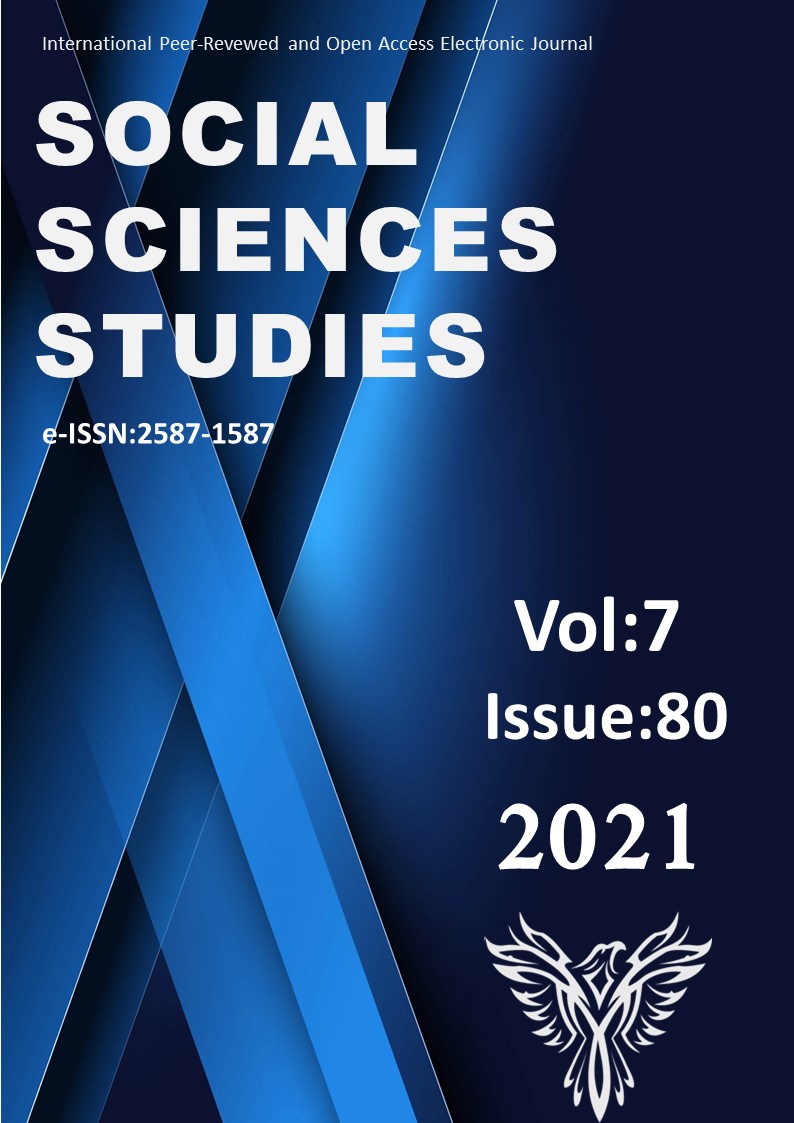Author :
Abstract
Bu makalenin amacı, İsrafil meleğinin dini inançlardaki farklı misyonlara sahip olduğunu gösteren sanat eserlerini incelemek, söz konusu eserleri ikonografik açıdan değerlendirmek ve aralarındaki ortak özellikleri ve farklılıkları tespit etmektir. Üretildiği dönemin kültürel, ekonomik ve soysal yapısının görsel bir belgesi olan minyatür sanatı, el yazması kitapların içinde can bularak, anlatılmak istenileni resim diline aktarmıştır. İslamiyet’le birlikte, tasvir sanatı gerçeklikten uzak bir biçimde ele alınıp nesnelerin stilize edilmesiyle soyut bir sanat haline gelmiştir. Ortaçağda yoğunlaşan çeviri faaliyetleri neticesinde resimli el yazması kitapların sayısı artmış, devletin yanı sıra zengin orta kesimin desteğiyle de minyatür sanatı hızlı bir biçimde gelişmiştir. Eserdeki çeşitlik minyatürlere de yansımış, din, tarih, edebiyat, astronomi, tıp, botanik gibi pek çok alana ait örnekler verilmiştir. Din alanında, peygamberler, melekler gibi dini figürlerin sıklıkla tasvir edildiği görülmektedir. Özellikle, İslam inancına göre dört büyük melekten birisi olan İsrafil, İskendernâme, Ahvâl-ı Kıyâmet, Acâibü’l-Mahlûkat ve Garaibu'l-Mevcûdat gibi eserlerde belirli ikonografik özellikleriyle yaygın biçimde konu edilmiştir. İslam inancında olduğu gibi Hıristiyanlıkta da İsrafil meleğinin önemli bir yeri vardır. Kutsal yazılar içerisinde Tobit’te İsrafil’in varlığı görülmektedir. Hıristiyan ikonografisinde İsrafil genel olarak sol elinde tıbbi bir aletle sağ elinde şifa için taşıdığı balıkla tasvir edilmektedir. Bu çalışma kapsamında İsrafil meleğinin farklı konular içerisinde hangi özellikleriyle tasvir edildiği ve tarih boyunca doğan üslup farklılıkları incelenerek, ikonografik olarak yorumlanmıştır.
Keywords
Abstract
The purpose of this article is to analyze the artwork depicting the angel of İsrafil having different types of mission in religions, to evaluate the mentioned works iconographically, to identify the common features and differences among them. İslamic miniature art is a visual document of the cultural, economic and social structure of the period that it was produced. The art of miniature has become an abstract art associated with the Islam by stylizing objects in the way of being far from reality. As a result of intensified translation activities in the Middle Ages, the number of illuminated manuscripts has increasead, and miniature art has thrived quickly with the support of the upper-middle class besides government. The variety of works has affected the miniature as well, and provided illustrations belonging to a great many such fields as religion, history, literature, astronomy, medicine, botany. It is seen that religious figures such as prophets and angels have been frequently depicted in the field of religion. Especially, İsrafil being one of four great angels according to Islamic belief has been widely mentioned with certain iconographic features in the works such as Iskandernamah, Ahvâl-i Qiyâmeh, Ajā’ib al-makhlûqât and Gharāyib al-Mawjûdât. Just as in the case of Islam, the angel İsrafil has played a significant role in Christianity as well. İsrafil has been in Tobit, scripture. In Christian iconography, İsrafil has generally been depicted with a medical device in his left hand and a fish for healing in the right hand. Within the scope of this study, it has been discussed that how angel İsrafil is depicted in the scripture, and explicated iconographically by analyzing style differences which have been arised throughout history.





